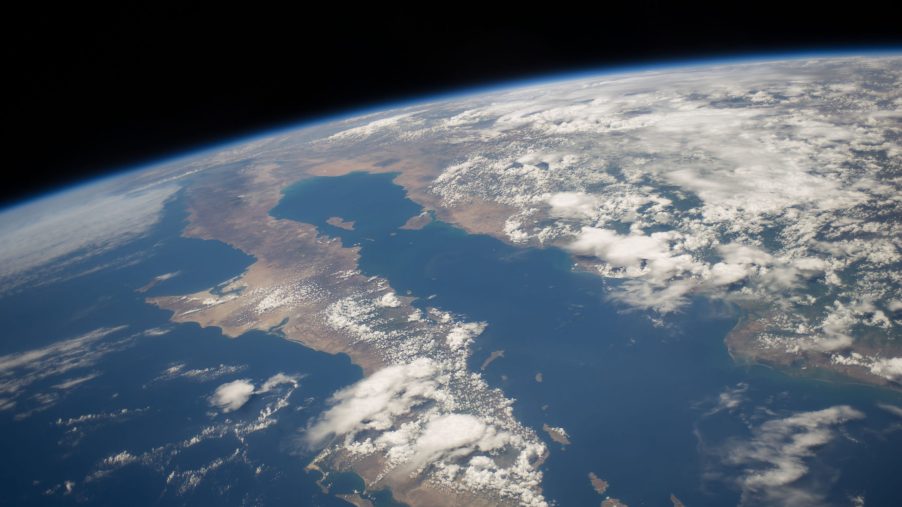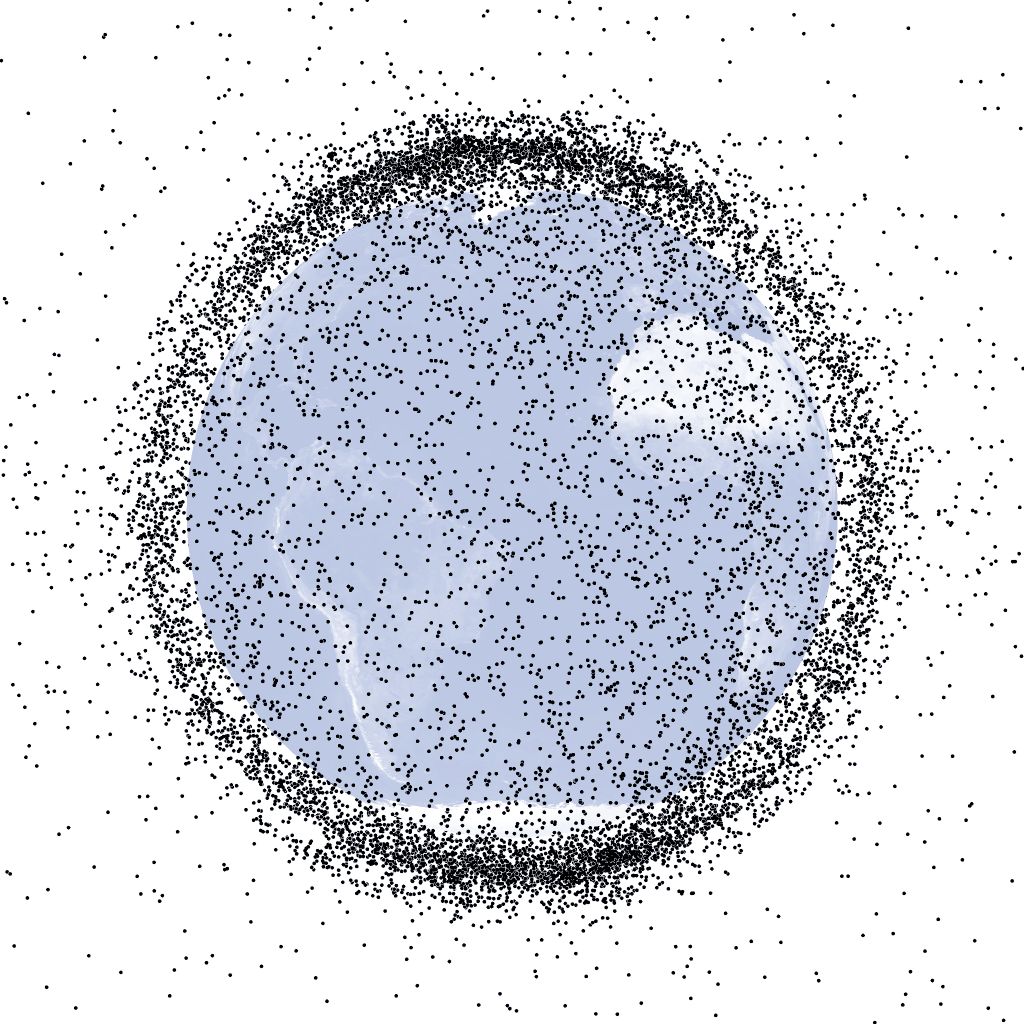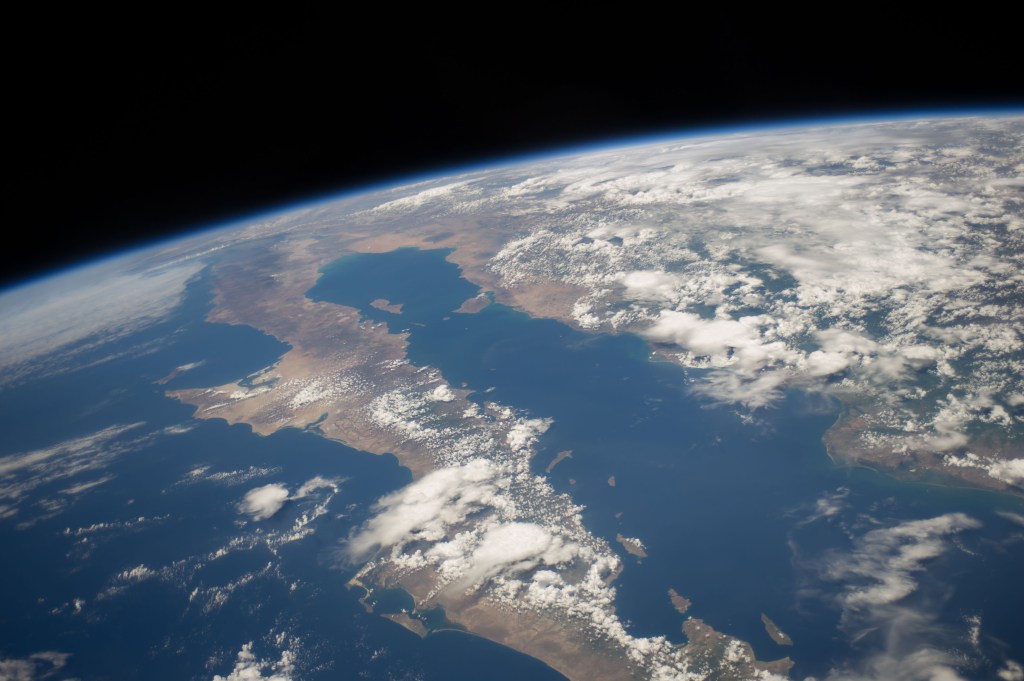
Space Junk Is Clogging up the Sky, and Could Be Dangerous.
Ever since the Russians shot Sputnik into space back in 1957, rocket boosters and space junk has been collecting stardust in the night sky. And while we’re not at Wall-E levels of satellites in orbit just yet, we get closer each day. Not only that, but the abundance of space junk is and potentially dangerous. And if we don’t start cleaning up, we may never make it to the far reaches of space again.

How much space junk is up there right now?
SpaceX pioneering the reusable rocket may offset the amount of space junk floating around in the future, but we may already be in too deep. According to NASA, there are approximately 3,000 defunct satellites, 23,000 pieces of debris larger than a softball, half a million pieces of debris the size of a marble, and 100 million tiny metal flecks about a millimeter long.
And every year, 100 tons of space junk is said to crash down on earth. Most of it lands in the ocean or, if it’s small enough, burns up in the atmosphere. But many countries, such as China, have developed “anti-satellite” technologies. In the event that a defunct satellite or rocket booster is on a collision course with the country, they’ll fire a missile to push the junk back into orbit.
In the short term, that counterattack works. But the issue comes from satellites exploding into thousands of pieces. And while a piece of junk the size of a pea sounds harmless, in deep space, it’s as dangerous as ever.
Space junk starts to get dangerous when it crashes into itself
Space junk travels at speeds of 17,500 mph. For context, a pea traveling that fast would have over 100 trillion horsepower (roughly determined by speed and time it’d take to complete a quarter-mile). But jokes aside, getting hit by something the size of a pebble at that speed would put a gaping hole through any satellite it hits.
But the problem doesn’t end there. If you throw a ball through a glass window, the glass shatters and falls straight down, as does the ball. Do that in zero gravity at high speed, the glass creates a wall of shards, and the ball doesn’t lose any momentum. This creates thousands more bits of debris, which will inevitably hit other things. Then those collisions will cause other collisions, and so on, and so on.
This endangers so many aspects of our society beyond space travel. Do you use a GPS, a cell phone, or the internet? The answer to all of those (or at least the last one) is likely yes. And if satellites start going down due to cataclysmic chain reactions, you’d better start learning how to use a map.
It even poses a threat for the International Space Station on a yearly basis, which has to perform evasive maneuvers to dodge concerning pieces of space junk. After all, a hit to the station could tear it apart, and result in the loss of a trillion-dollar international project and possibly lives.
The saddest part about all this is that we may already be past the tipping point. With countless dead satellites, boosters, and tiny slivers of junk orbiting the earth, we’re slowly boxing ourselves in. And the space travel we’ve been dreaming of may soon come to an end.
Will space travel come to an end someday?

If we surround the earth with high-speed shards of metal, glass, and material, getting a rocket into space may become impossible. Upon exiting the atmosphere, the rocket itself would be ripped apart and explode, even if it’s made from the strongest materials. And that could very well create more space junk, pushing our efforts back for years.
And while there are efforts to reverse this growing problem, such as sending nets and magnets to space to collect junk, those aren’t the popular solutions. According to Space.com, it’d require new satellites and be incredibly expensive. Government agencies and private organizations are more focused on limiting how much space junk they create in the first place.
For starters, a spacecraft must use every bit of its fuel in order to prevent an unexpected explosion. And if a booster or dead satellite has some extra fuel to burn, it might be pushed into an orbit hundreds of miles above our working satellites.
But for now, the key strategy is to track any potential collision, so that we can prepare for the consequences. That, paired with limiting how much junk we put in the sky, might just keep the dreams of space travel alive. At least a while longer.


